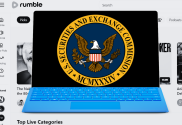I read with interest Jon Udell’s OSCOM keynote slides. The main subject is how to write the web “in a rich way” – and by “rich” he means semantic. Udell talks about there being a lack of easy-to-use XML writing tools for the Web. Weblog tools are user-friendly and they are the killer app for web writing, but they lack the ability to create structured XML information. Content Management Systems on the other hand have become bloated with features, making it difficult for non-technical people to use them.
Udell suggests that simple doses of metadata, added consistently to common markup such as titles or class attributes, will help weblogs and CMSs alike bring semantic structure to Web writing.
I did a search around the Web on this topic. There seems to be some confusing terminology out there. Firstly regarding rich text editors – the word “rich” in these products refers to presentational markup. For example: bold, italics, underline, bullet, indent, font type. These products basically emulate what popular word-processing software does. Similarly when Macromedia talk about a Rich Internet Application, they mean a Flash-based browser application. I believe when Udell talks about writing “rich” Web content, he is talking about adding structure and meaning.
Writing to the Web is what weblogs and CMSs are all about. Being able to add metadata to Web content, without having to handcode XML or feed a CMS monster, is the holy grail for these tools. As a Davenet from 2000 stated: “…simplicity is the single biggest thing that’s in the way of the Web as an easy writing environment”. RSS2.0 is a good example of a simple and easy to understand XML format, which still has rich functionality. We need the same simplicity and richness in the tools we use to write to the Web.





